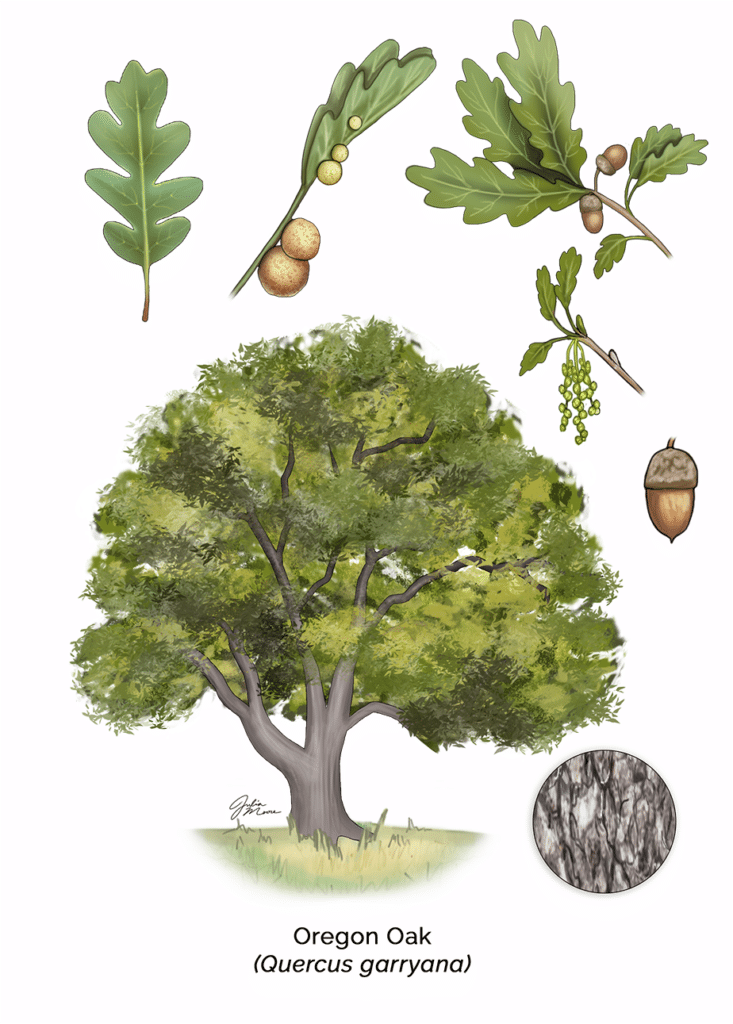Quercus garryana
Defining Characteristics
Oregon oak, also known as Garry oak, is a deciduous hardwood tree recognized for its deeply lobed leaves, thick, furrowed bark, and stout, spreading branches. It often grows in an open, rounded canopy, reaching heights of 30–80 feet, depending on site conditions. The acorns are a key feature, providing a vital food source for wildlife. This tree is drought-tolerant and well-adapted to the dry summers and wet winters of its native range.
Distribution

Oregon oak is primarily found in the Pacific Northwest, from southern British Columbia through western Washington and Oregon to northern California. It thrives in open woodlands, savannas, and dry slopes, often coexisting with grasses and wildflowers. In wetter areas, it may share habitats with conifers like Douglas-fir, while in drier regions, it is more commonly found in isolated stands.
Uses Today
Oregon oak plays an important role in modern conservation efforts, as its habitats support diverse ecosystems, including rare prairie and savanna species. The wood, though dense and durable, is used sparingly in furniture, flooring, and specialty items due to limited availability. The tree is increasingly valued for its ecological contributions, such as providing habitat for pollinators, birds, and mammals, as well as its use in restoring native landscapes and combating climate change through carbon storage.
